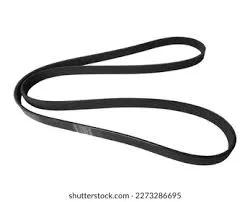- Arabic
- French
- Russian
- Spanish
- Portuguese
- Turkish
- Armenian
- English
- Albanian
- Amharic
- Azerbaijani
- Basque
- Belarusian
- Bengali
- Bosnian
- Bulgarian
- Catalan
- Cebuano
- Corsican
- Croatian
- Czech
- Danish
- Dutch
- Afrikaans
- Esperanto
- Estonian
- Finnish
- Frisian
- Galician
- Georgian
- German
- Greek
- Gujarati
- Haitian Creole
- hausa
- hawaiian
- Hebrew
- Hindi
- Miao
- Hungarian
- Icelandic
- igbo
- Indonesian
- irish
- Italian
- Japanese
- Javanese
- Kannada
- kazakh
- Khmer
- Rwandese
- Korean
- Kurdish
- Kyrgyz
- Lao
- Latin
- Latvian
- Lithuanian
- Luxembourgish
- Macedonian
- Malgashi
- Malay
- Malayalam
- Maltese
- Maori
- Marathi
- Mongolian
- Myanmar
- Nepali
- Norwegian
- Norwegian
- Occitan
- Pashto
- Persian
- Polish
- Punjabi
- Romanian
- Samoan
- Scottish Gaelic
- Serbian
- Sesotho
- Shona
- Sindhi
- Sinhala
- Slovak
- Slovenian
- Somali
- Sundanese
- Swahili
- Swedish
- Tagalog
- Tajik
- Tamil
- Tatar
- Telugu
- Thai
- Turkmen
- Ukrainian
- Urdu
- Uighur
- Uzbek
- Vietnamese
- Welsh
- Bantu
- Yiddish
- Yoruba
- Zulu
Nov . 09, 2024 23:44 Back to list
Engine Belts for Nissan Vehicles Enhanced Performance and Durability Solutions
Understanding the Importance of Nissan Engine Belts
When it comes to maintaining your Nissan vehicle, one of the key components that often gets overlooked is the engine belt. An engine belt is a critical part of the vehicle's engine system, responsible for the operation of various engine components. In this article, we will explore the different types of engine belts commonly found in Nissan vehicles, their functions, signs of wear, and maintenance tips to ensure your cars operate smoothly.
Nissan vehicles typically utilize two main types of belts in their engine systems the serpentine belt and the timing belt. The serpentine belt is a long, continuous belt that drives multiple components in the engine, including the alternator, power steering pump, water pump, and air conditioning compressor. In contrast, the timing belt is a critical component that ensures the synchronization of the engine's camshaft and crankshaft, allowing the engine's valves to open and close at the proper times during each cylinder's intake and exhaust strokes.
Functionality of Engine Belts
The primary function of the serpentine belt is to transfer power from the engine to various accessories. A well-functioning serpentine belt ensures that all the accessories work efficiently, contributing to the overall performance of the vehicle. If the serpentine belt wears out, it can cause a loss of power to the accessories, leading to potential overheating, loss of steering control, or failure of the electrical system.
On the other hand, the timing belt plays a crucial role in the engine's performance. It is essential for maintaining the engine's timing; if the timing belt fails, the engine can suffer catastrophic damage, including bent valves, damaged pistons, and a complete engine failure. Therefore, regular inspections and timely replacements of the timing belt are vital for preserving the health of your Nissan engine.
Signs of Wear and Tear
Drivers should be aware of the warning signs that indicate their engine belts may need attention. For the serpentine belt, look for visible signs of wear, such as cracks, fraying, or glazing. Additionally, if you notice any unusual noises, such as squeaking or squealing, it could indicate that the belt is slipping or becoming loose.
for nissan engine belt

For the timing belt, the signs of wear can be less noticeable but equally dangerous. If you experience any issues with the engine's performance, such as misfiring, difficulty starting, or an engine that runs roughly, it may be time to inspect the timing belt. Some vehicles have a timing belt replacement interval recommended by the manufacturer, which should be strictly followed to prevent potential issues.
Maintenance Tips
To ensure the longevity and optimal performance of your Nissan engine belts, regular maintenance is keys. Here are some tips
1. Regular Inspections Check the condition of both the serpentine and timing belts during routine maintenance checks. Look for signs of wear and ensure they are properly tensioned.
2. Follow Manufacturer Guidelines Always refer to your vehicle’s owner’s manual for specific recommendations regarding replacement intervals for your belts. Nissan typically recommends replacing the timing belt every 60,000 to 100,000 miles, depending on the model.
3. Professional Servicing If you suspect any issues with your engine belts or if it’s time for a scheduled replacement, always consult with a professional mechanic who specializes in Nissan vehicles.
4. Replace in Pairs If replacing the serpentine belt, consider checking other associated components like the idler pulleys and tensioners. It’s cost-effective to replace worn components simultaneously.
In conclusion, engine belts are vital components of your Nissan vehicle that require attention and regular maintenance. By understanding their functions, recognizing the signs of wear, and adhering to a proper maintenance schedule, you can ensure that your vehicle remains in optimal working condition and avoid costly repairs down the road. Remember, prevention is always better than cure when it comes to vehicle maintenance.
-
Upgrade Power Steering Pump Belt for Smooth, Quiet Operation
NewsAug.27,2025
-
Precision Timing Belt & Chain: Engine Performance & Durability
NewsAug.26,2025
-
Precision Lathe Drive Belts: Durable & Reliable Performance
NewsAug.25,2025
-
84.5 Serpentine Belt: Durable & Precision Fit for Your Engine
NewsAug.24,2025
-
Premium Ribbed Drive Belts for Quiet Power Transmission
NewsAug.23,2025
-
High-Performance Vehicle Timing Belt for Engine Precision
NewsAug.22,2025

